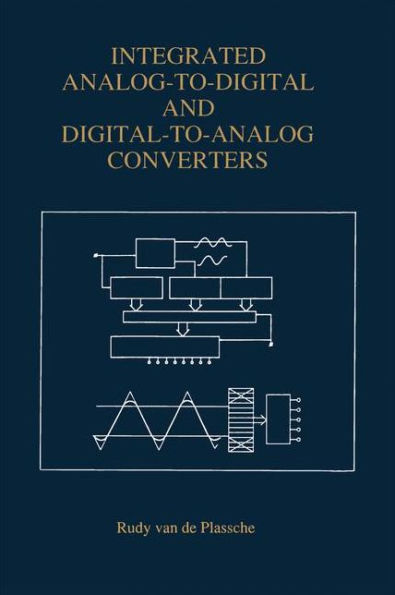Analog-to-digital (A/D) and digital-to-analog (D/A) converters provide the link between the analog world of transducers and the digital world of signal processing, computing and other digital data collection or data processing systems. Several types of converters have been designed, each using the best available technology at a given time for a given application. For example, high-performance bipolar and MOS technologies have resulted in the design of high-resolution or high-speed converters with applications in digital audio and video systems. In addition, high-speed bipolar technologies enable conversion speeds to reach the gigaHertz range and thus have applications in HDTV and digital oscilloscopes. Integrated Analog-to-Digital and Digital-to-Analog Converters describes in depth the theory behind and the practical design of these circuits. It describes the different techniques to improve the accuracy in high-resolution A/D and D/A converters and also special techniques to reduce the number of elements in high-speed A/D converters by repetitive use of comparators. Integrated Analog-to-Digital and Digital-to-Analog Converters is the most comprehensive book available on the subject. Starting from the basic elements of theory necessary for a complete understanding of the design of A/D and D/A converters, this book describes the design of high-speed A/D converters, high-accuracy D/A and A/D converters, sample-and-hold amplifiers, voltage and current reference sources, noise-shaping coding and sigma-delta converters. Integrated Analog-to-Digital and Digital-to-Analog Converters contains a comprehensive bibliography and index and also includes a complete set of problems. This book is ideal for use in an advanced course on the subject and is an essential reference for researchers and practicing engineers.
"1000993559"
Integrated Analog-To-Digital and Digital-To-Analog Converters
Analog-to-digital (A/D) and digital-to-analog (D/A) converters provide the link between the analog world of transducers and the digital world of signal processing, computing and other digital data collection or data processing systems. Several types of converters have been designed, each using the best available technology at a given time for a given application. For example, high-performance bipolar and MOS technologies have resulted in the design of high-resolution or high-speed converters with applications in digital audio and video systems. In addition, high-speed bipolar technologies enable conversion speeds to reach the gigaHertz range and thus have applications in HDTV and digital oscilloscopes. Integrated Analog-to-Digital and Digital-to-Analog Converters describes in depth the theory behind and the practical design of these circuits. It describes the different techniques to improve the accuracy in high-resolution A/D and D/A converters and also special techniques to reduce the number of elements in high-speed A/D converters by repetitive use of comparators. Integrated Analog-to-Digital and Digital-to-Analog Converters is the most comprehensive book available on the subject. Starting from the basic elements of theory necessary for a complete understanding of the design of A/D and D/A converters, this book describes the design of high-speed A/D converters, high-accuracy D/A and A/D converters, sample-and-hold amplifiers, voltage and current reference sources, noise-shaping coding and sigma-delta converters. Integrated Analog-to-Digital and Digital-to-Analog Converters contains a comprehensive bibliography and index and also includes a complete set of problems. This book is ideal for use in an advanced course on the subject and is an essential reference for researchers and practicing engineers.
54.99
In Stock
5
1

Integrated Analog-To-Digital and Digital-To-Analog Converters
501
Integrated Analog-To-Digital and Digital-To-Analog Converters
501Paperback(Softcover reprint of the original 1st ed. 1994)
$54.99
54.99
In Stock

Product Details
| ISBN-13: | 9781461361862 |
|---|---|
| Publisher: | Springer US |
| Publication date: | 11/05/2012 |
| Series: | The Springer International Series in Engineering and Computer Science , #264 |
| Edition description: | Softcover reprint of the original 1st ed. 1994 |
| Pages: | 501 |
| Product dimensions: | 6.30(w) x 9.45(h) x 0.04(d) |
From the B&N Reads Blog
